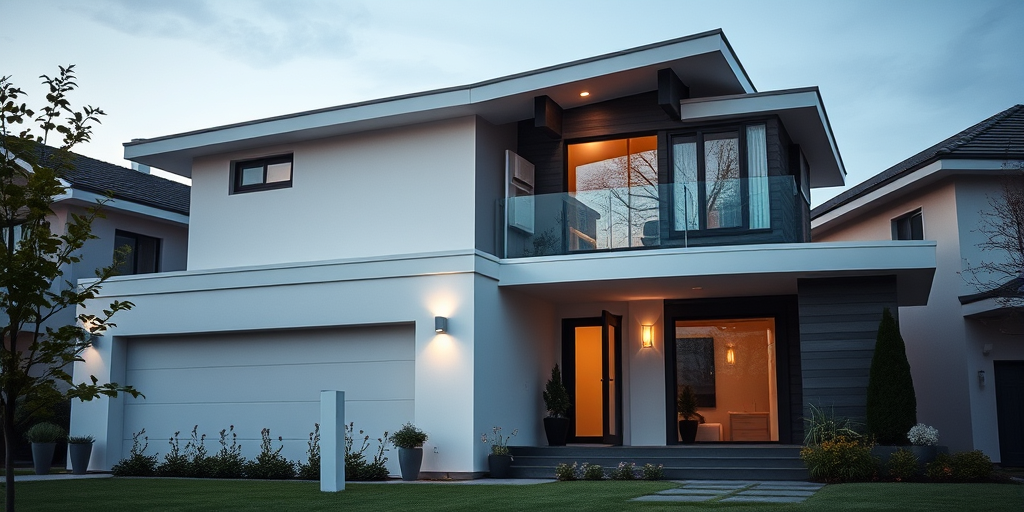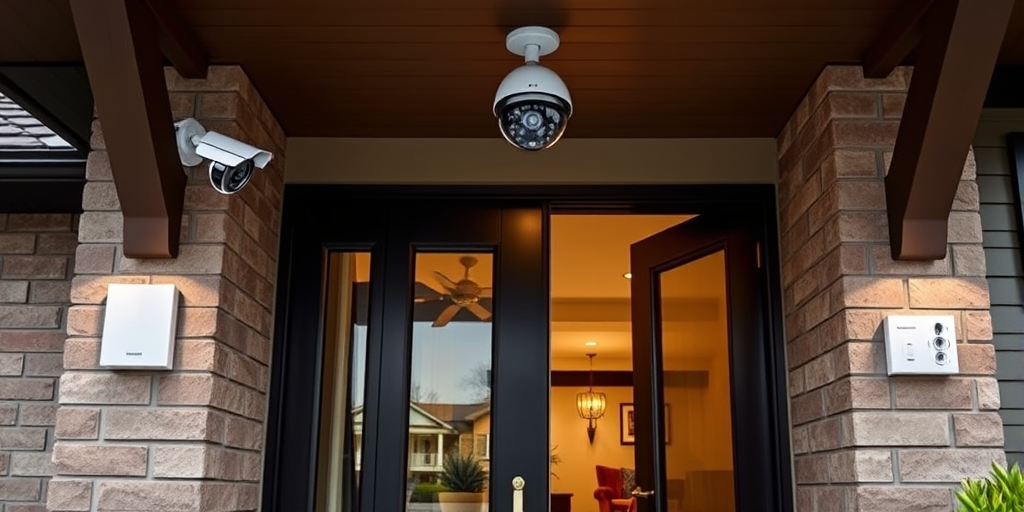Do you ever wonder if your current home security truly protects against modern threats? In our deep-dive evaluation, we dissect core components—from advanced intrusion detection sensors and precise monitoring modes to integrated mobile alerts—that define optimal protection.
I analyze both consumer feedback and technical specifications to separate top-rated security solutions from the rest. This comprehensive review breaks down essential features and performance metrics, ensuring you make an informed choice in selecting the best home security system available today.
Comparative Analysis: Residential Security Systems You Can Get

Evaluation criteria focus on installation type, upfront cost, monthly fee, and key features such as sensor quality, camera performance, smart-home integration, and overall usability. Our analysis compares top-rated DIY and professional systems, emphasizing cost efficiency, system flexibility, and long-term reliability.
Each option is measured against its ability to integrate wired and wireless sensors while maintaining smart surveillance technology and robust consumer protection ratings. This structured approach ensures that readers gain a clear perspective on the benefits and limitations inherent to each system and can make informed decisions based on individual security needs.
| System Name | Installation Type | Upfront Cost | Monthly Fee | Key Features |
|---|---|---|---|---|
| SimpliSafe | DIY | $220 – $300 | $15 | Ease of use, sensor accuracy, flexible setup |
| ADT | Professional | $600+ | $30 | High-quality cameras, integrated smart-home features |
| Vivint | Professional | $1,400+ | $40 | Advanced sensors, professional monitoring, comprehensive coverage |
| Ring | DIY/Optional Professional | $250+ | $20 | Smart surveillance, user-friendly app, ecosystem integration |
| Abode | DIY | $200+ | $15 | Customizable setups, robust automation, affordability |
- DIY installations deliver greater cost flexibility, faster deployment, and no long-term contracts.
- Professional installations offer enhanced system integration and bundled warranties, albeit with higher upfront costs.
- DIY systems emphasize user control and easy customization but may require additional troubleshooting for complex setups.
- Professional options ensure rigorous, technician-supported installation along with reliable ongoing monitoring and support.
Installation, Monitoring, and Military-Tech Inspired Security Measures

DIY installations offer streamlined implementation that empowers homeowners to deploy security systems rapidly. Utilizing peel-and-stick sensors, these systems are designed for expedient setup, often completed within a few hours. DIY options are cost-effective with lower upfront expenses, making them attractive for users seeking immediate and flexible protection without long-term commitments.
Conversely, professionally installed systems involve skilled technician support to ensure precise calibration and tailored sensor placement. These setups generally incur higher costs—often exceeding $600—but they provide enhanced integration of military-inspired technology. Longer installation timeframes accommodate detailed network configuration and rigorous testing, ultimately delivering encrypted communications and robust performance. This investment secures advanced features that contribute to continuous monitoring and elevated system reliability.
- Ease of installation
- Rapid response monitoring
- Signal range performance
- Sensor placement strategies
These key features collectively mirror the reliability and swift reaction capabilities found in advanced military systems. By significantly reducing installation complexity and ensuring a dependable network of sensors, both DIY and professional approaches benefit from improved response times during security breaches. Users gain confidence through enhanced performance metrics, such as extensive signal range and strategic sensor positioning, which are hallmarks of military-grade technology. Ultimately, the integration of these optimized features translates into a fortified home defense system that delivers both rapid alerts and sustained, unparalleled operational integrity.
Cost and Contract Considerations: Determining What Is the Best Home Security System You Can Get
Evaluating a home security system requires a detailed cost analysis that factors in both upfront investments and long-term contractual obligations. Upfront equipment costs vary significantly, with DIY setups often priced under $500, while professional installations start at around $599 and can approach $1,400.
Monthly fees also differ, ranging from $10 to $60, with most premium services clustering between $30 and $40 per month. This cost-benefit security analysis is crucial for risk management, as hidden fees or additional upgrade costs might affect the overall value of the system.
| System | Upfront Cost | Monthly Fee | Contract Length | Notable Features |
|---|---|---|---|---|
| SimpliSafe | $300 | $15 | Month-to-month | DIY ease-of-use, flexible setup |
| ADT | $600+ | $30 | 36 months | Professional installation, robust monitoring |
| Ring | $250+ | $20 | Optional contracts | Smart surveillance, user-friendly interface |
| Vivint | $1,400+ | $40 | 36 months | Comprehensive coverage, advanced sensors |
- Hidden fees that may increase total cost
- Discount opportunities for long-term contract commitments
- Potential upgrade costs for added devices and enhanced features
Final Words
In the action, our article dissected operational mechanics, sensor innovations, and varied installation methods. We evaluated the nuances between DIY convenience and professional expertise, spotlighting advanced intrusion detection, mobile alerts, and military-grade technology.
Our discussion integrated expert evaluations, consumer insights, and detailed cost analysis, ensuring a comprehensive view of cutting-edge security features.
These reflections highlight what is the best home security system you can get, empowering you with thorough, data-driven insights for strategic protection choices.
FAQ
What’s the best home security system without a subscription?
A: SimpliSafe and Ring Alarm offer comprehensive DIY security systems without mandatory subscriptions, featuring local alarm functionality, mobile alerts, and expandable sensor options for complete home protection.
How much does professional home security monitoring cost?
A: Professional monitoring services typically range from $10 to $60 monthly, with most reputable providers charging between $30-40 for comprehensive 24/7 monitoring and emergency response.
Which security system offers the best cameras?
A: Arlo Pro and Ring Spotlight Cam lead the market with 2K HDR video, color night vision, two-way audio, and advanced motion detection features for optimal surveillance coverage.
What’s better – DIY or professional installation?
A: DIY systems save money and offer flexibility with easy peel-and-stick sensors, while professional installation ensures optimal placement and setup but costs $150-500 more upfront.
How much equipment do I need for basic home security?
A: A basic effective setup requires entry sensors for all ground-level doors and windows, 1-2 motion sensors, a base station, and at least one outdoor camera.
Are wireless security systems reliable?
A: Modern wireless systems utilize encrypted signals and backup cellular connections, achieving 99% uptime with battery backup protection during power outages.
What smart home features should I look for?
A: Essential smart features include mobile app control, voice assistant integration, automated arming schedules, and real-time video streaming with instant motion alerts.
How long do security system batteries last?
A: Security sensor batteries typically last 3-5 years, while backup batteries for base stations provide 24-48 hours of operation during power failures.
